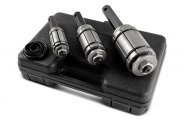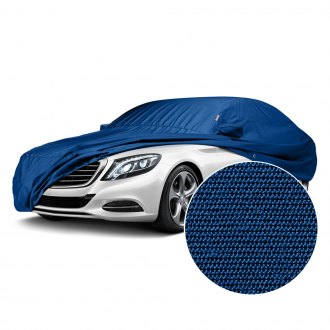Austin Healey Accessories & Parts
Austin Healey Parts
Universal Wheels & Tires
Austin Healey Exterior Accessories
Austin Healey Automotive Lighting
Austin Healey Body Parts
Austin Healey Interior Accessories
Universal Audio & Electronics
 Installation Parts
Installation Parts Stereos
Stereos Speakers
Speakers Amplifiers
Amplifiers Subwoofers
Subwoofers Cameras & Driver Safety
Cameras & Driver Safety Alarms & Remote Start
Alarms & Remote Start CB Radios & Components
CB Radios & Components Antennas & Components
Antennas & Components Mobile Phone Cables & Connectors
Mobile Phone Cables & Connectors Bluetooth
Bluetooth Equalizers & Processors
Equalizers & Processors Batteries & Power
Batteries & Power Video
Video Radar Detectors
Radar Detectors GPS Systems
GPS Systems Mounts & Chargers
Mounts & Chargers Action Cameras & Accessories
Action Cameras & Accessories
Austin Healey Automotive Tools
 Oil Change Tools
Oil Change Tools Brake Service Tools
Brake Service Tools Suspension & Steering Service Tools
Suspension & Steering Service Tools Pullers & Installers
Pullers & Installers Repair Manuals
Repair Manuals Spark Plug & Ignition Tools
Spark Plug & Ignition Tools Wheel & Tire Service Tools
Wheel & Tire Service Tools Engine Service Tools
Engine Service Tools Fuel System Service
Fuel System Service Transmission & Drivetrain Service Tools
Transmission & Drivetrain Service Tools Cooling System Service Tools
Cooling System Service Tools A/C Tools & Equipment
A/C Tools & Equipment Electrical System Tools
Electrical System Tools Diagnostic & Testing Tools
Diagnostic & Testing Tools Exhaust System Service Tools
Exhaust System Service Tools Auto Glass Tools
Auto Glass Tools Lockout Kits
Lockout Kits Jacks
Jacks Automotive Lifts & Stands
Automotive Lifts & Stands Automotive Paint
Automotive Paint EV Charging
EV Charging Battery Chargers & Jump Starters
Battery Chargers & Jump Starters Dollies & Movers
Dollies & Movers Creepers
Creepers Auto Detailing
Auto Detailing Key Cutting Machines
Key Cutting Machines Dent Repair Tools
Dent Repair Tools Service Carts
Service Carts Vehicle & Parts Protection
Vehicle & Parts Protection
Donald Mitchell Healey had a lifelong fascination with all things mechanical. His family encouraged his early interest in airplanes – in 1909 his father took him to see Louis Bleriot’s plane, the first to cross the English Channel, when it landed in Dover, and in 1914 secured an apprenticeship for him with the Sopwith Aviation Company. But Healey wanted more involvement in the war effort, so he lied about his age and earned his wings as a pilot in the Royal Flying Corp in 1916. Healey was a bomber pilot and flying instructor, but after being injured in a crash he was released from the service in 1917. After the war Healey turned his attention to automobiles and opened a repair garage, but he soon became interested in racing and became a successful rally driver. Of his many wins perhaps the most remarkable was his victory in the prestigious Monte Carlo Rally in 1931, which he achieved despite having to drive most of the race in an ill-handling car with a misaligned rear axle and brakes that were only functioning at 3 wheels.
Renowned for his competition success, in 1933 Healey was asked by the Riley Company to manage the team of drivers that would go on to win the Alpine Rally. He then moved to Triumph, where as technical director he was able to apply his considerable mechanical knowledge and racing experience to the design of production and racing cars. During WWII, Healey managed the production of aircraft engine carburetors and also worked on developing armored cars for Humber Limited, all the while dreaming of building a high-performance car of his own design. At war’s end in 1945 he founded the Donald Healey Motor Company with the goal of building upscale, high-performance cars. From 1946 to 1954 the company produced a number of 2.4L Riley twin-cam 4-cylinder powered cars including the Elliot and Tickford Saloons (Sedans) and the Silverstone roadster, which is highly prized by collectors today. In 1951 Nash Motors contracted with Healey to build the 6-cylinder Nash powered Nash-Healey, which was the first post-war sports car from an American manufacturer, pre-dating the Chevrolet Corvette by 2 years.
But although well-constructed and critically acclaimed, all of Healey’s cars were expensive and sold in low numbers. There wasn’t much of a market for them in England and Europe, which were still recovering from the war, and they were even too costly for the U.S., where the Nash-Healey sold for $2000 more than the already pricey Jaguar XK-120. If his company was to survive, Healey knew he had to build an affordable sports car, one that would fit neatly in the market price-wise between the MG TD and the Jag. The new roadster that ensued had a steel box section chassis with independent coil spring/wishbone suspension in front and a leaf spring supported live axle in rear. It was powered by a 2.6L in-line 4-cylinder Austin engine that sent its 90 hp through a 3-speed gearbox with overdrive. The stunningly sculpted steel body, with its long hood, sweeping fenders, rakish windshield and distinctively framed waterfall grille was designed by Gerry Coker. The prototype went 106 mph in testing, no small achievement for a small sports car of the day, so the car was named the Healey 100.
The Healey 100 debuted at the London Motor Show in 1952 and was such a sensation that the company was immediately deluged with 3000 orders. Leonard Lord, the head of Austin Motor Company, was so impressed with the car that he met with Donald Healey the evening of the opening day and bought the rights to the car, signing Donald Healey to a 20-year contract. With Austin’s manufacturing capabilities, thousands of cars could be built per year instead of the mere hundreds that Healey would be able to construct on his own. When the show reopened the next day, the car had been rebadged Austin-Healey 100, and a legend was born. The 100 entered production in the spring of 1953. It was more expensive than the primitive MG and the new Triumph TR2, but cost much less than the Jaguar XK-120, with looks and performance that made the car a steal at any price. The original 100 was built through 1956, including the high-performance 1955-56 100M and alloy-bodied 1954-56 100S. The 100M was equipped with a 4-speed overdrive gearbox and a higher compression 110 hp engine with larger carburetors, cold air induction, and high lift camshaft. The 100S was a stripped model built specially for racing, although it could be driven on the street, and only 50 examples were constructed. In addition to the lightweight body the car had no bumpers, a highly modified 132 hp engine, and 4-wheel disc brakes.
An extensive redesign in 1956 saw the car’s wheelbase stretched by two inches, the addition of an air scoop to the hood and an oval-shaped grille, and occasional rear seats. But the biggest change was under the hood, where a more powerful 2.6L in-line 6-cylinder engine replaced the previous generation’s 4-cylinder mill, and the car was renamed the 100-6. Initially the engine was rated at 102 hp, but a revised manifold and cylinder head boosted horsepower to 117 in 1957. In 1959, displacement of the 6-cylinder engine was increased to 2.9L, just shy of 3000cc, and the car now became the Austin-Healey 3000. The original 3000, which later became known as the Mark I to distinguish it from its successors, was built from 1959 to 1961, and featured front disc brakes and adjustable front seats. The engine, which was mated to a 4-speed gearbox with overdrive, was rated at 124 hp, and the car was available both as a 2-seater and a 2+2. Optional equipment included a factory hard top. An improved camshaft and carburetion boosted the 3000 Mark II’s horsepower to 132. This model was introduced in 1961 and in addition to a wraparound windshield and revised hood and grille, became the first in the line to have wind-up windows. The Mark III, built from 1964-1967, was the most refined and powerful 3000, with power brakes and a walnut veneer dash, and a 150 hp engine courtesy of a new cam, carburetors, and exhaust system.
The Austin-Healey 100, 100-6, and 3000 are collectively known as the “Big Healeys”, not because they were large cars but to distinguish them from the Austin-Healey Sprite, which was introduced in 1958 as an inexpensive, entry level sports car. Like its larger brothers the diminutive Sprite was designed by Gerry Coker and featured headlights prominently affixed to the hood, creating a unique appearance that led to it being known as the “Bugeye Sprite”. The unibody Sprite roadster was powered by a 948cc in-line 4 cylinder engine and equipped with coil spring/wishbone front suspension and leaf springs with a live axle in the rear. It had no outside door handles, and to preserve structural integrity, had no trunk lid, which required the seat backs to be tilted forward to access the spare tire and luggage compartment. In 1961 a revised Sprite debuted with an all-new body styled by Les Ireland that was a virtual clone of the MG Midget. This design continued with minor revisions to styling and performance until the model was discontinued in 1971.
Donald Healey left British Motor Corporation (which was created when Austin and Morris merged in 1952) in 1968 when British Leyland took over. During their production run over 70,000 Big Healeys were sold as well as over 126,000 Sprites, including over 48,000 Bugeyes. Austin-Healeys were very successful in many types of motor racing, particularly rallies, and some owners continue to use their cars in vintage racing. The Big Healeys are considered to be among the best British sports cars ever made and the original Sprite is popular with collectors as well. Today there are Austin-Healey clubs and Internet forums all over the world where owners and enthusiasts can congregate and share information, advice and technical tips. And with our large selection of maintenance supplies, repair parts, and appearance products, we can also be a valued resource to enhance your Austin-Healey ownership experience.
Dress your vehicle up. Keep it running at its peak or unleash its hidden power. Make it look like it just rolled off the show room floor. Take care of it and maintain it. You name it, we've got it. We have gathered everything you need to make your Austin Healey perfect both inside and out. CARiD's job is to meet your every expectation and provide you with quality and durable accessories and parts designed with excellence in mind. Whether you're after luxurious style, brisk performance, or anything in between, our wide assortment covers all the bases.
Popular Products
-
 $38.97 - $860.17
$38.97 - $860.17 -

-
 $55.56 - $292.46
$55.56 - $292.46

















